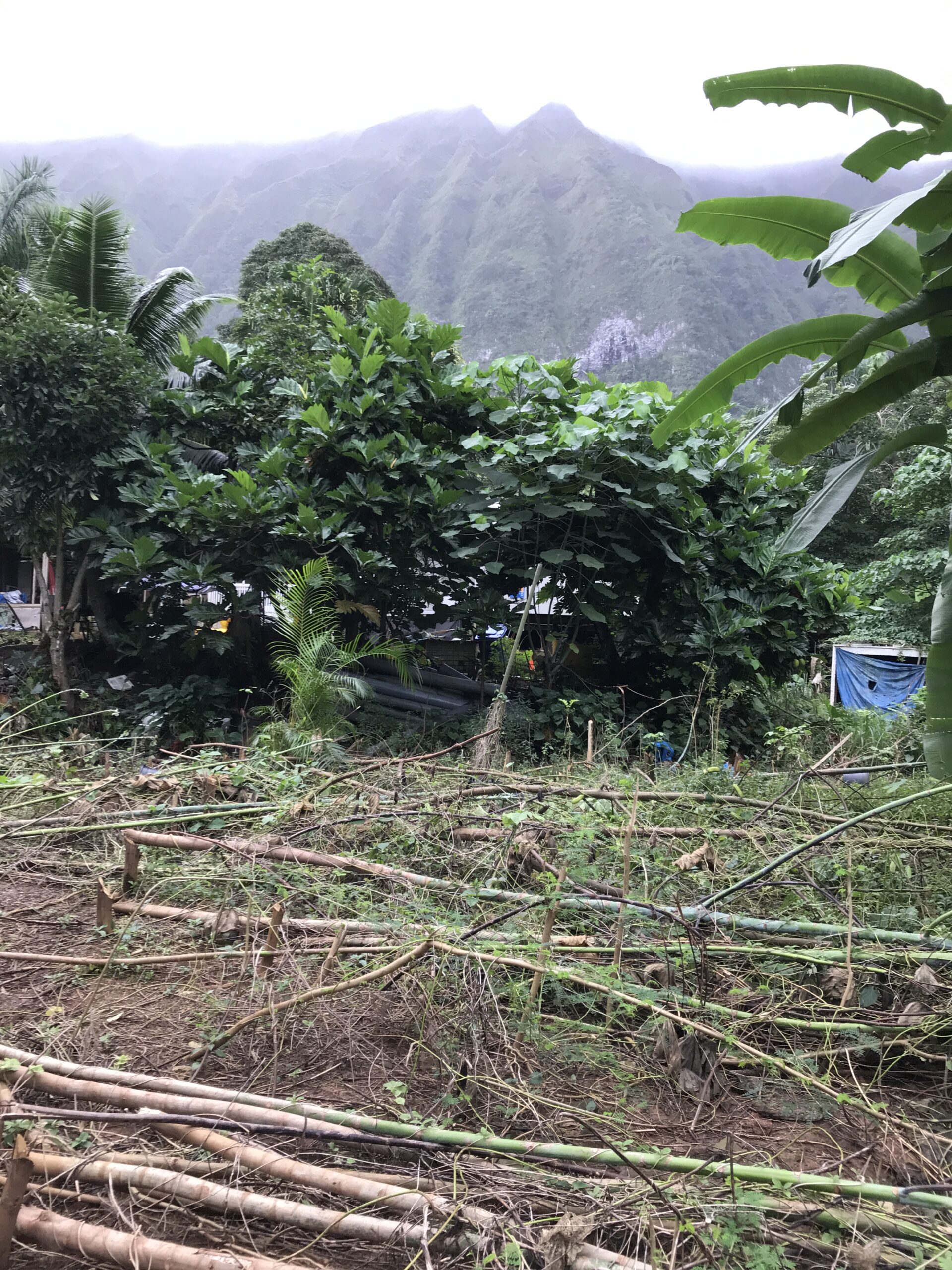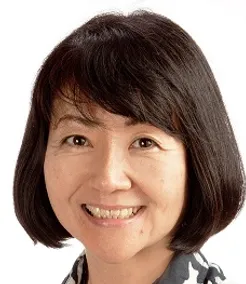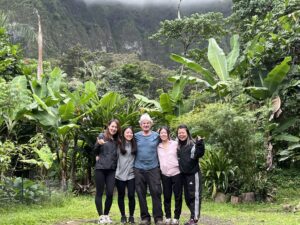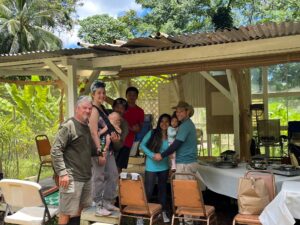This May marks exactly five years since we started the agroforestry project here in Waimanalo, on the island of Oahu. Although the colorful flowers now contrast beautifully with the green leaves of the trees and the vegetables, when we began the agroforestry here in 2020, it was a thicket of vines and long grasses that grew in all directions. It was difficult to even set foot on it, which made us easily imagine that it had been neglected for many years. The previous owner’s vehicles, tools, and trash were discarded here and there.
Moreover, peeking out from under them was the red clay soil. It was not possible to immediately grow vegetables in the open field. First, the site was to be cleaned up. Then, bark chips were carried in wheelbarrows to the area where we would create the foundation for the field. The clippings of wild grass are brought into the chicken coop, where the chickens peck and stir them, and humus is produced from the grass, chicken manure, and microorganisms under the coop. It is then taken back to the field, piled into rows, and compost from vegetable waste and earthworms is added. That is a circulation between the grasses, chickens, and fields, which was the system Gary had planned to generate an organic soil with good aeration and drainage.
No sooner than we were relieved to have the land cleared, large native grasses, bathed in the intense Hawaiian sun, began to grow quickly here and there. Although natural farming allows the roots of weeds to coexist with vegetables to a certain extent, weeds must be cut, used as green manure, or carried to the chicken coop frequently so as not to disturb the growth of the newly planted seedlings. The to-do list kept piling up, and the whole process kept stalling. Gary and Takae’s time and power were limited, and even with only a little over 3 acres of farmland, the help of volunteers was essential.
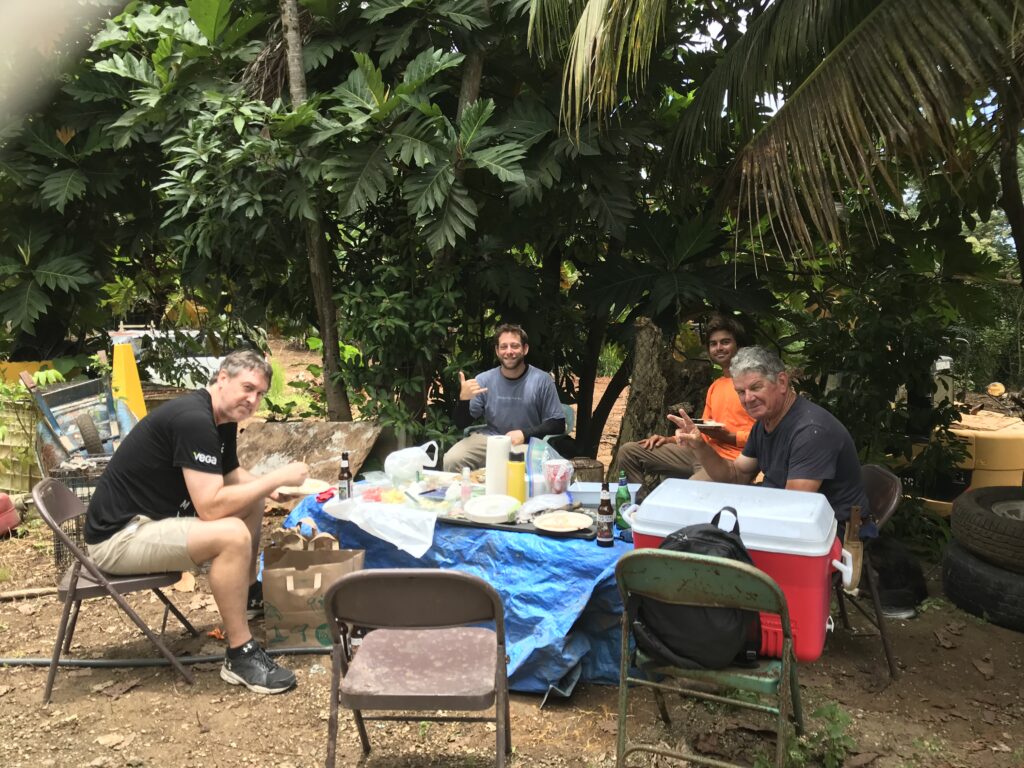
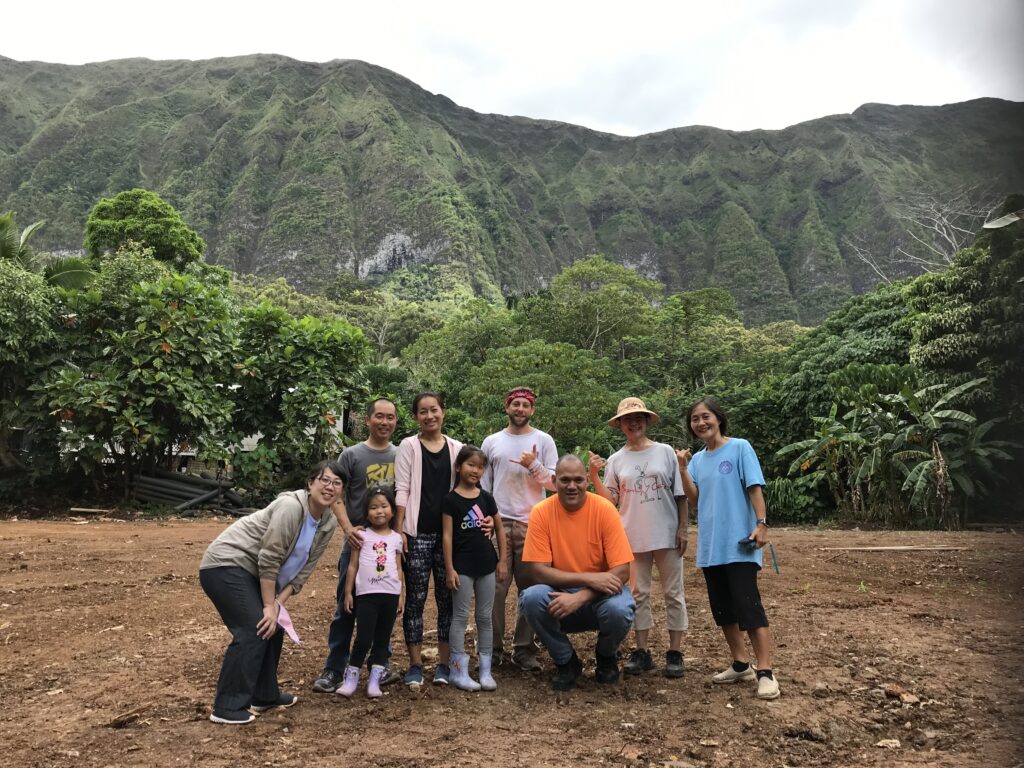

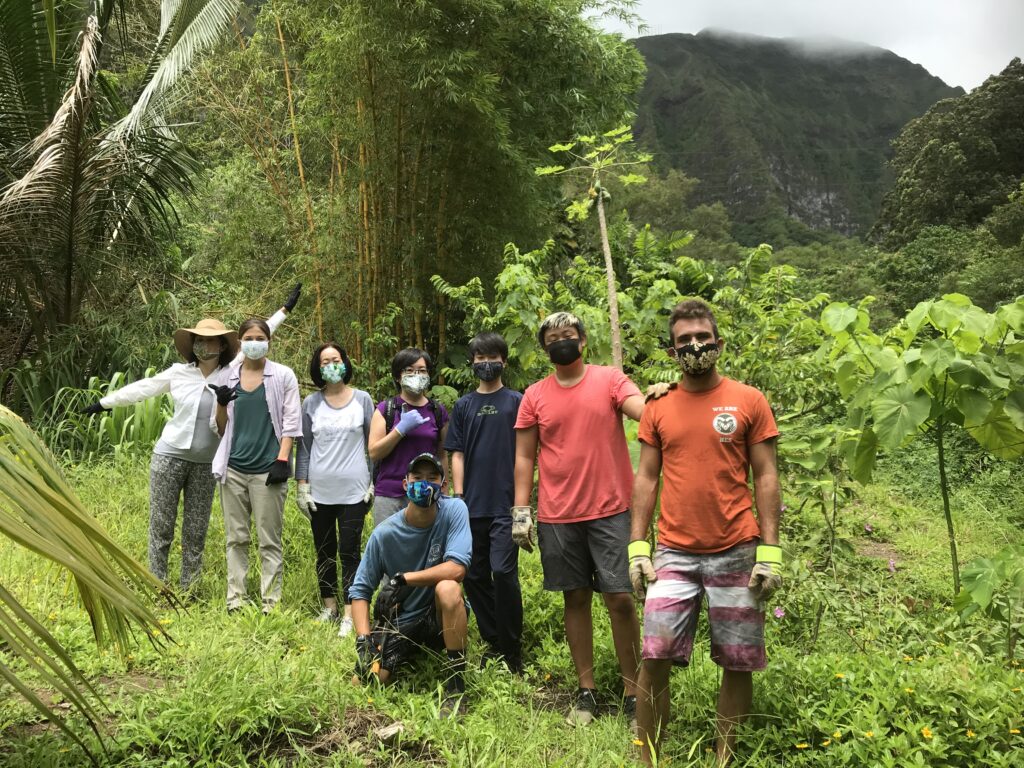
Then the COVID-19 pandemic broke out. However, agriculture was an “essential business” as defined by the curfew, and we were fortunate to be able to continue our work.
Moreover, young people, who had been itching to go to the beach or mountains due to the curfew, heard about our agroforestry project and came to volunteer every week with their friends. At one point, more than 20 people showed up on a Saturday alone, and the foundation for our project, which was initially expected to be challenging to pursue by just Gary and Takae, was accelerated. It can truly be said that a pinch created a chance.
When the number of volunteers was large, Takae devoted herself to being a “lunch server.” She thought up recipes using crops from the farm, prepared them from the night before, and cooked them as a token of her appreciation for the volunteers. After sweat-inducing labor, we shared a homemade lunch using the farm’s bounty. We enjoyed discussing the farm’s future with our mates under the common philosophy of “nature is the No.1 boss here” and “follow its order.” Accordingly, a great community had emerged on the farm.
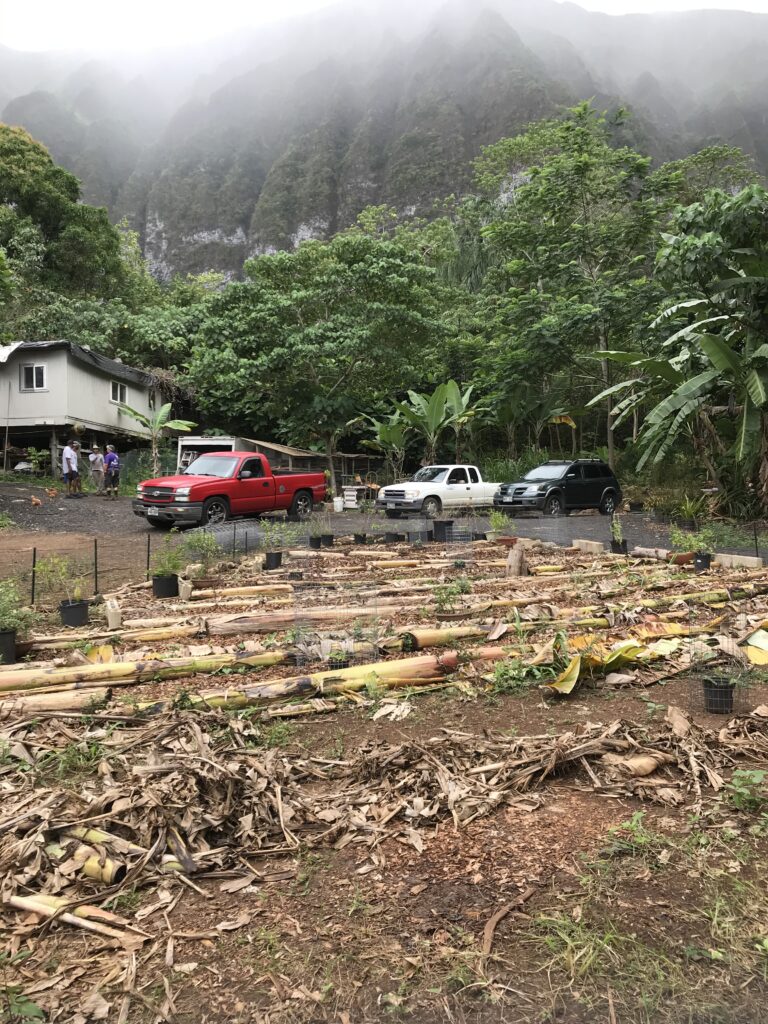
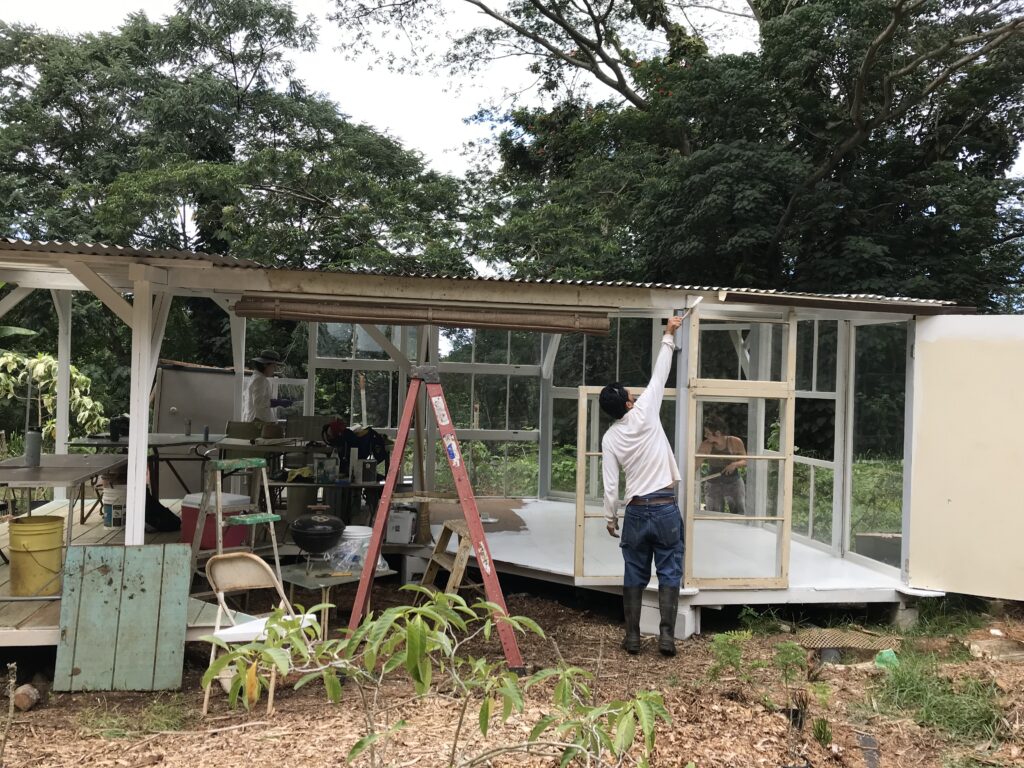
These enjoyable and delicious gatherings with like-minded people became the basis for the seasonal event programs that we now hold quarterly. The ulu and kalo recipes that were popular among the volunteers at that time are still served at our seasonal events and have been well-received by the participants.
After the pandemic ended, the number of local volunteers who came every weekend decreased. However, thanks to the ingenuity and persistence of the core volunteers who continued to come regularly, the land gradually became more fertile. Also, the volunteer relay, which I introduced in the previous issue, continues, as short-term visitors in Hawaii pass the baton from one friend to the next.
Since the establishment of the “Second Nature Farm Membership” two years ago, we have seen a gradual increase in the number of people who have become the farm members after applying for the first time as natural farming volunteers, or who have invited their friends, family members, and colleagues overseas to join as a group for our seasonal events. The number of members participating in the seasonal events has also grown steadily. Second Nature Farm is what it is today thanks to these volunteers and members.
That is a chain of people who were attracted to such a small agroforestry farm on the Island of Oahu in Hawaii and wished to connect this project to the future. Now, we feel that it is beginning to spread quietly and gradually. We want to express our deepest and most sincere gratitude to those who have volunteered their time and effort, and those who will continue to support us.


